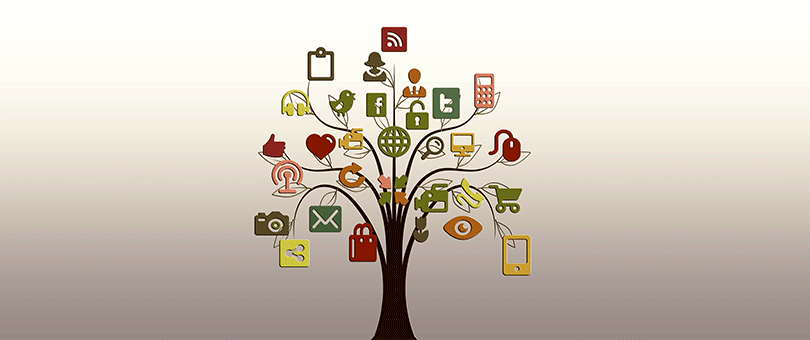
TOPICS:
Chatbot for Businesses Chatbot for Website Chatbot Optimization
Chatbot for Facebook Messenger - Chatbot for Messenger vs. Chatbot for Website
Just two years ago, Facebook launched a piece of tech that would give mobile apps a run for their money. By allowing businesses to build their own chatbots on Messenger, Facebook helped them connect with millions of users, without springing for a dedicated app. In fact, to the layperson, the term ‘chatbot’ was basically short for ‘Facebook Messenger chatbot’.
If Facebook Messenger chatbots promised businesses an upgrade from classic mobile apps, chat bots for websites offered even more freedom – letting them interact one-on-one with their consumers, right from their own websites.
So if we were to pit Facebook Messenger chatbots against chatbots for websites, which of them would emerge as the winner?
In the absolute sense, neither. But if you run a business or are closely involved with one, you need to know what makes each type of chatbot unique, so you can build the best chat bot for your needs. The following considerations will help you understand the difference between the two.

Each type of chatbot addresses a different type of visitor.
Before you begin comparing Facebook Messenger chatbots with chatbots for websites, you must remember that the visitors on your Facebook page and the visitors on your website are different. Those who visit your Facebook page and interact with your Messenger bot can be identified by their Facebook usernames, and they’re aware that anything they type into the Messenger window will have their name on it. Your website’s visitors, on the other hand, can remain anonymous unless they choose to give out their names. This anonymity is generally linked with a feeling of greater freedom, allowing the website visitors to ask any question or seek any kind of information.
The content on your Facebook page differs from the content on your website.
You don’t just have two different types of visitors. Your own business has two different ‘storefronts’ – a relatively static, information-rich version on your website, and a dynamic, marketing-oriented social media presence. Visitors on your website can expect to see a product catalog, blog articles, FAQs, terms and conditions, and so on. Visitors on your Facebook page can just see what you share on your timeline. This difference in content leads to a different set of questions from the two categories of visitors. For example, questions your Facebook Messenger chatbot can expect to be asked include:
“Is last night’s flash sale still active?”“When does your new store open?”“How do I claim my loyalty rewards?”And questions that the online chatbot on your website has to answer would be more like:
“Can I return a product 30 days after receiving it?”“How can I check on the status of my shipment?”“What kinds of triple door refrigerators do you sell?”In short, the scripts of your Messenger chatbot and website chatbot will need to be different. Each would need to be optimized to cater to a different set of questions.
Facebook’s for follow-ups, website’s for one-time conversations.
Because your Messenger bot interacts with visitors who have Facebook accounts, it can pick up on an existing conversation or follow up on an issue at any point in time. Let’s say you have a tour booking agency and a visitor named Mike has been talking to your Facebook Messenger chatbot about airfare from New York to Paris. The next time your agency comes up with airfare or hotel discounts, your Messenger chatbot can catch up with users like Mike.
Messenger chatbot:
“Hey, how’ve you been? Have you booked your NY-Paris tickets yet? If not, we have a great offer on airfare and hotel tariffs that you might like to check out. Take a look below!”Chatbots for websites, on the other hand, need to talk to anonymous visitors, and spark enough interest in your product or service for those visitors to share their contact details by the end of the conversation. Website chatbot development should thus focus on scripts that include the option of asking visitors for their contact info, or at the very least, scripts that make for a positive user experience by solving visitor issues in one interaction.
In our existing example, let’s assume that Mike has arrived at your tour agency website. This is the first time he has dealt with your service, and at the moment, he’s just interested in cheap airfares.
Website chatbot:
“Hello, and welcome to ABC Tours chatbot, please write your question or choose one of the options below”Mike:
“NYC Paris return air fares between 15th and 25th May.”Website chatbot:
“I’ve just run a search for the dates and destinations you mentioned, and the air fares are listed below.”Mike:
“Are these your best prices?”Website chatbot:
“We always show you the lowest prices for your trip.
We do have weekly promotions and discounts on air tickets and hotel tariffs, though.
Would you be interested in our next offer?”Mike:
“Yes.”Website chatbot:
“Please leave your email address below so I can send you a notification as soon as our next offer’s live.”There’s no ‘one-chatbot-fits-all’ solution.
Your business is unique, and you must find out what’s best for you. This holds true for your choice of chatbot as well. The fact that you see your competitors using the same chatbot for their websites and Messenger platforms doesn't mean that this would be the right thing for you as well. Put effort into thinking about your specific business needs, and the ways in which you would like to interact with your potential and existing customers. Then use these considerations to test out different options and finally develop the best chatbot that meets your requirements.
Read more informative articles on our blog, and make the right chatbot development decisions for your business. Should you need help with building chatbots for your website or Messenger platform, just leave us a message.